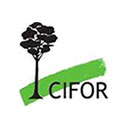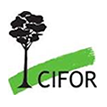Managing forests sustainably involves ecology, social aspects, and economics. A recent CIFOR paper by Jack Ruitenbeek and Cynthia Cartier called ’Rational Exploitations: Economic Criteria and Indicators for Sustainable Management of Tropical Forests’ discusses the latter aspect.
The paper’s five main lessons are:
* Look beyond simple efficiency to consider equity and sustainability.
* Keep your focus on the stand of trees, but don’t forget the policies and institutions that affect the stand.
* Pay as much attention to stocks and assets as to flows and income.
* Be prepared for surprises and exercize precaution in forest management.
* Keep the criteria and indicators simple to permit an easy assessment of trade-offs.
The paper provides a list of recommended criteria and indicators and a list of indicators that should be avoided, as well as an evaluation of the economic criteria and indicators recommended by the International Tropical Timber Organization, the African Timber Organization, the Amazon Cooperation Treaty countries, the German Initiative on Tropical Forests, the UK Soil Association, the Rainforest Alliance, and the Indonesian Ecolabeling Institute.
The paper suggests that manager and certifiers avoid the use of indicators such as internal rates of return, economic valuations of ecological services, and complex indices of wealth and income distribution. The authors’ own proposed set of economic criteria and indicators include four basic principles, twelve criteria that can help operationalize those principles, and forty specific indicators that help assess whether the criteria are being met.
We want you to share Forests News content, which is licensed under Creative Commons Attribution-NonCommercial-ShareAlike 4.0 International (CC BY-NC-SA 4.0). This means you are free to redistribute our material for non-commercial purposes. All we ask is that you give Forests News appropriate credit and link to the original Forests News content, indicate if changes were made, and distribute your contributions under the same Creative Commons license. You must notify Forests News if you repost, reprint or reuse our materials by contacting forestsnews@cifor-icraf.org.
Further reading
If you would like to comment on this message, please write to Jack Ruitenbeek at mailto:hjruiten@web.net
To obtain a copy of the paper, write to Ravi Prabhu at mailto:r.prabhu@cgiar.org When you request the paper, let us know if we can send it to you electronically in PDF format and, if not, what alternative might be best for you.




